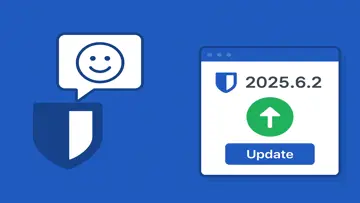Overview of python_gnupg
python_gnupg is a Python library designed to facilitate the integration of GnuPG (GNU Privacy Guard) functionality within Python applications. Developed by Vinay Sajip, this library allows developers to encrypt, decrypt, sign, and verify data using GnuPG, effectively enabling secure communication and data storage in their projects.
Key Features
- Simplicity: The library offers a straightforward API that abstracts the complexities involved in using GnuPG directly from the command line.
- Support for Multiple Operations: It supports a variety of cryptographic operations including encryption, decryption, signing messages, and verifying signatures.
- Symmetric and Asymmetric Encryption: Developers can choose between symmetric (using a passphrase) and asymmetric (using key pairs) encryption according to their needs.
- File Handling: The library can handle both files and strings for encryption and decryption processes.
- Cross-platform Compatibility: Compatible with various operating systems where GnuPG is installed, ensuring wide usability.
- Key Management: Provides methods for generating, importing, exporting, and managing GnuPG keys within Python applications.
Installation Process
The installation of python_gnupg is straightforward. It can be installed using pip, Python’s package manager. The command below can be executed in the terminal to install the library:
pip install python-gnupg
This command will download and install the latest version available on the Python Package Index (PyPI). Ensure that you have GnuPG installed on your system to utilize all functionalities offered by this library.
Basic Usage
The following is a brief guide on how to use python_gnupg in a typical application:
- Import the Library: Start by importing the gpg module from the python_gnupg package. import gnupg
- Create a GnuPG Object: An instance of the GnuPG class must be created to interact with GnuPG. gpg = gnupg.GPG()
- Generate Key Pair: Developers can generate a key pair using the create_key() method. input_data = gpg.gen_key_input(name_email='[email protected]') gpg.gen_key(input_data)
- Encrypt Data: To encrypt a message or file, use the encrypt() method. encrypted_data = gpg.encrypt('Hello World!', recipients=['[email protected]'])
- Decrypt Data: Decrypting involves providing the encrypted data and passphrase (if using symmetric encryption). decrypted_data = gpg.decrypt(encrypted_data.data, passphrase='yourpassphrase')
- Sign Messages: Signing a message can be achieved through the sign() method. signed_data = gpg.sign('Hello World!')
- Verify Signatures: Lastly, verifying signatures is done with the verify() method. verification_result = gpg.verify(signed_data)
Error Handling
Error handling while using python_gnupg is robust. Common exceptions include issues related to key management or incorrect passphrases when decrypting. Developers are encouraged to implement try-except blocks around cryptographic operations to gracefully handle any errors that arise during execution.
User Community and Support
The maintenance of python_gnupg is actively supported by its developer community. Users can report bugs, request new features, or seek help via its GitHub repository. This collaborative environment enhances the usability of the library as feedback from users contributes to its ongoing improvement.
Documentation
The official documentation for python_gnupg is detailed and extensive. It provides comprehensive guidance on installation, usage examples, API references, and common troubleshooting steps. This resource can be invaluable for both new and experienced developers looking to implement cryptography in their applications efficiently.
Best Practices
- Secure Key Management: Always ensure that your private keys are stored securely and protected against unauthorized access.
- Password Management: Use secure passwords for symmetric encryption and consider utilizing environment variables or secure vaults for passphrase storage.
- Audit Logs: Maintain logs on cryptographic operations to aid in auditing and debugging processes.
- User Education: If integrating this library into applications used by others, consider providing users with education or resources about safe cryptography practices.
Simplifying Cryptography in Python
The python_gnupg library stands out as an effective tool for developers seeking to integrate security into their software through cryptographic operations. By leveraging this library's easy-to-use API along with GnuPG's robustness, developers can create secure applications suited for various needs while minimizing complexity associated with cryptographic processes.
Total Compatibility with GnuPG Functions
This versatility means that while users are working within Python environments, they still benefit from the comprehensive capabilities of GnuPG without needing to delve into its command-line interface directly. Python_gnupg provides a seamless bridge between Python development environments and powerful cryptographic functionalities available through GnuPG.
概述
python_gnupg 是在由Vinay Sajip开发类别 Development Open Source 软件。
最新版本是 python_gnupg 的目前未知。 它最初被添加到我们的数据库 2009/10/16 上。
python_gnupg 在下列操作系统上运行: Windows。
python_gnupg 已不被评为由我们用户尚未。
评测
|
|
WPS Office
WPS Office:满足您所有需求的多功能办公套件 |
|
|
Adobe Photoshop
终极照片编辑软件:Adobe Photoshop 评论 |
|
|
CPU-Z
通过 CPUID 使用 CPU-Z 获取有关 CPU 的详细信息。 |
|
|
Adobe Flash Player NPAPI
Adobe Flash Player NPAPI:多媒体网页浏览的必备软件 |
|
|
Intel Driver & Support Assistant
轻松让您的英特尔系统保持最新状态 |
|
|
Microsoft Visual Studio 2010 Tools for Office Runtime Language Pack
使用语言包增强 Microsoft Visual Studio 的功能 |
|
|
UpdateStar Premium Edition
UpdateStar Premium Edition:管理軟體更新的實用工具 UpdateStar Premium Edition 是一種軟體管理工具,旨在通過確保您的程式是最新的,説明您的 PC 保持最佳狀態。它可以處理從掃描過時軟體到提供個人化推薦,甚至備份您的配置以便在需要時恢復設置的所有事情。仔細查看自動更新功能 : 此功能會自動掃描您的電腦以查找過時的程式,只需按下即可説明您更新它們。無需再尋找每個應用程式的最新版本。軟體資料庫: UpdateStar … |
|
|
Microsoft Edge
發現增強的 Microsoft Edge 瀏覽器:您的終極 Web 導航工具 Microsoft Edge 仍然是頂級 Web 瀏覽器,在速度、安全性和與 Microsoft 生態系統的無縫集成之間實現了最佳平衡。它在 Chromium 引擎上重建,提供令人印象深刻的性能,同時保持時尚和使用者友好的介面。 Microsoft Edge 的主要功能和優勢 高速性能: 借助基於 Chromium 的引擎,體驗快速的網頁載入時間,使流覽更流暢、更高效。 增強的安全性:使用 … |
|
|
Google Chrome
Google Chrome評論:快速、靈活且安全的網路瀏覽器 Google Chrome 是領先的網路瀏覽器之一,以其速度、簡單性和豐富的功能集而聞名。Chrome 由Google開發,利用 Webkit(及其分支 Blink)等開源技術來提供高性能的 HTML 渲染,確保跨設備的無縫瀏覽體驗。 Chrome 的創新使用者介面採用簡約設計,將標籤頁放置在窗口頂部,以最大限度地利用 Web 內容的螢幕空間。集成的多功能框結合了位址和搜索功能,可智慧區分 URL … |
|
|
Microsoft Visual C++ 2015 Redistributable Package
Microsoft Visual C++ 2015 Redistributable Package 是 Microsoft 创建的軟體元件。它為使用者提供了運行使用 Visual Studio 2015 創建的應用程式所需的運行時元件。此可再發行元件組件組件旨在使開發人員能夠更輕鬆地在系統上部署其應用程式,而不必擔心是否已安裝所需的運行時元件。該包包括 Microsoft 基礎類 (MFC)、Visual C++ CRT 和標準 C++ 等庫。如果沒有這些庫,使用 … |
|
|
Microsoft Visual C++ 2010 Redistributable
評論:Microsoft Visual C++ 2010 Redistributable by Microsoft Microsoft Visual C++ 2010 Redistributable 是由 Microsoft 開發的軟體應用程式,它為使用 Microsoft Visual C++ 2010 構建的程式提供運行時元件。在未安裝 Visual C++ 2010 的電腦上執行使用此版本的 Visual … |
|
|
Microsoft OneDrive
探索 Microsoft OneDrive 的無縫雲存儲 Microsoft OneDrive 是 Microsoft Corporation 領先的雲存儲服務,它提供了一個用於跨設備存儲、同步和共用檔的多功能平臺。自 2007 年作為 Windows Live Folders 成立以來,OneDrive 不斷發展以滿足現代使用者的需求,並與 Microsoft 生態系統深度集成。 跨平臺相容性,實現極致靈活性 借助 OneDrive 在 Windows、Mac、iOS 和 … |





